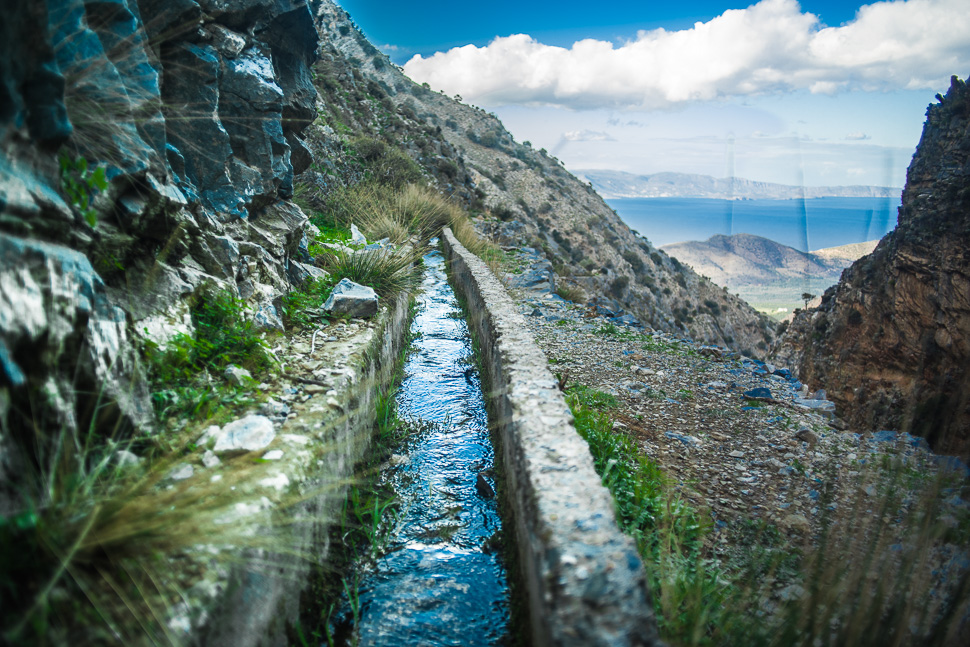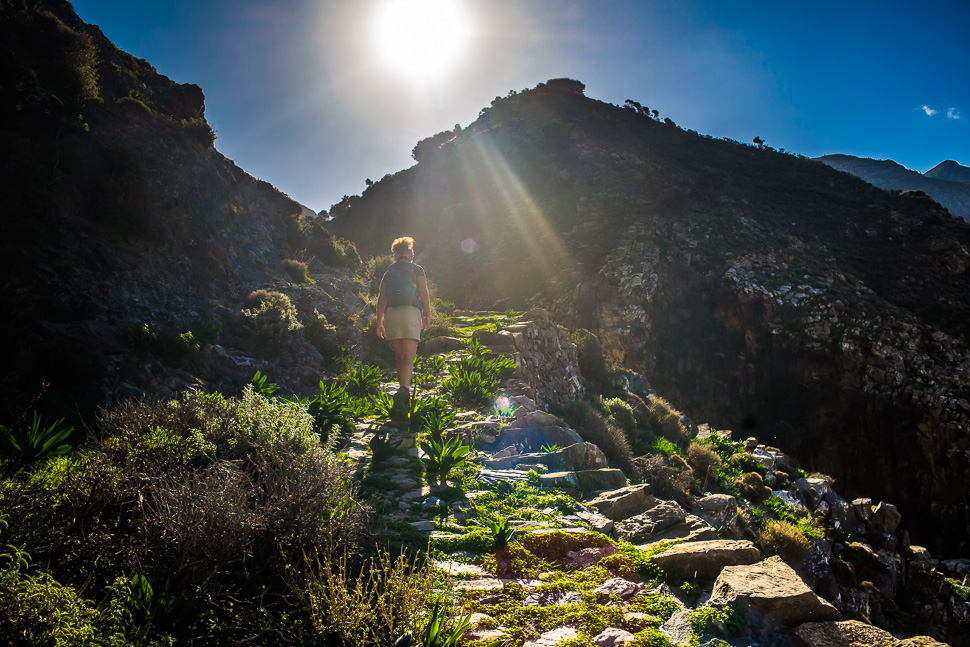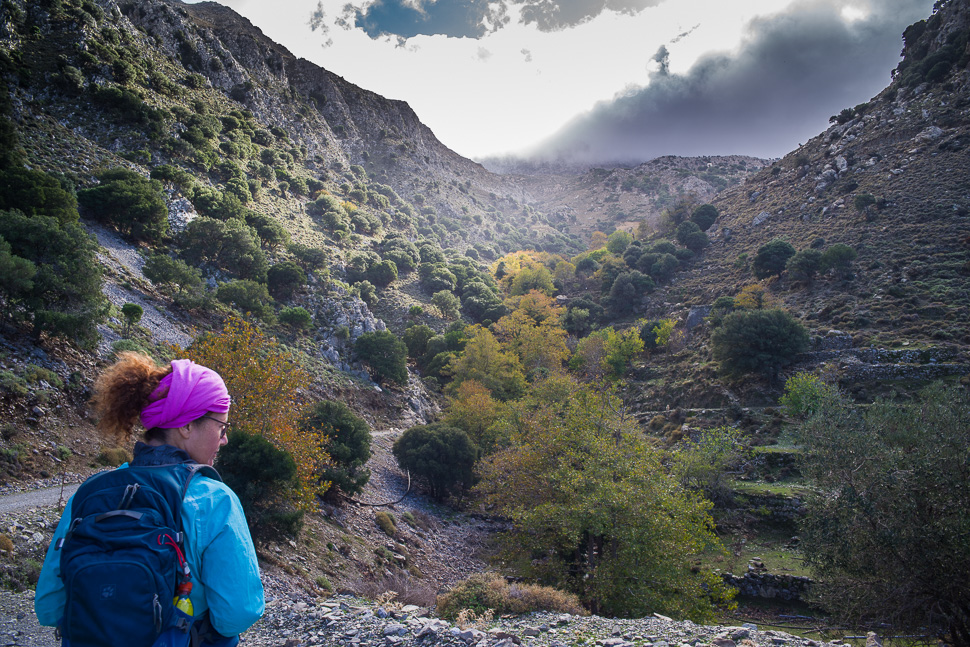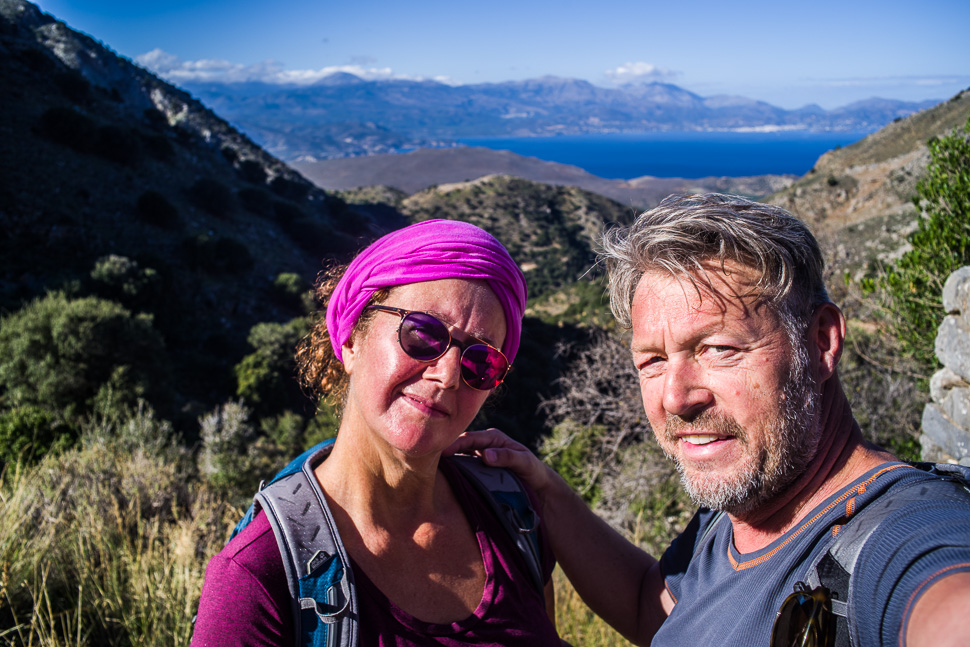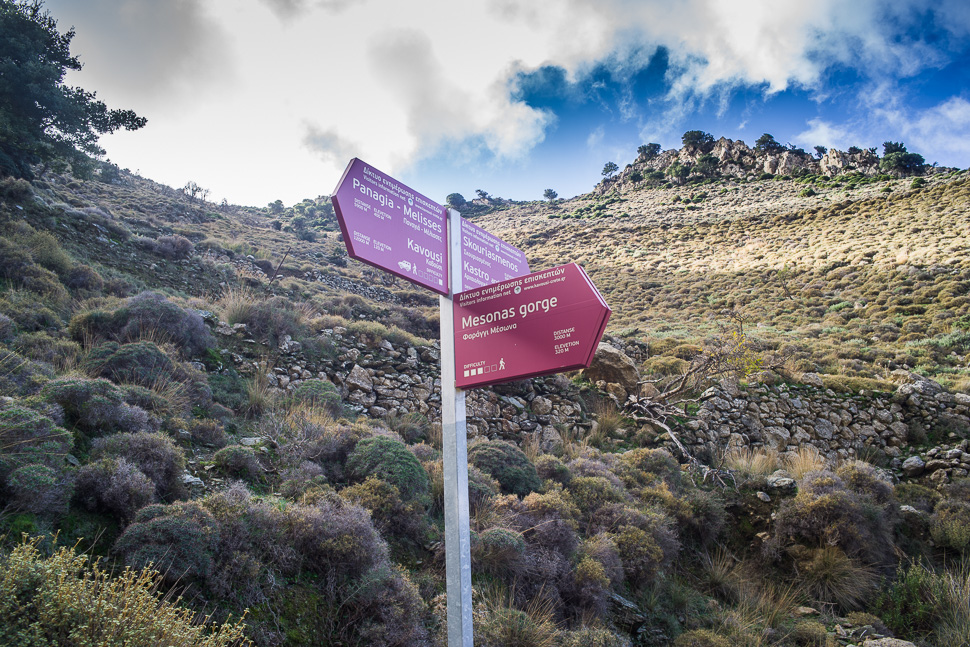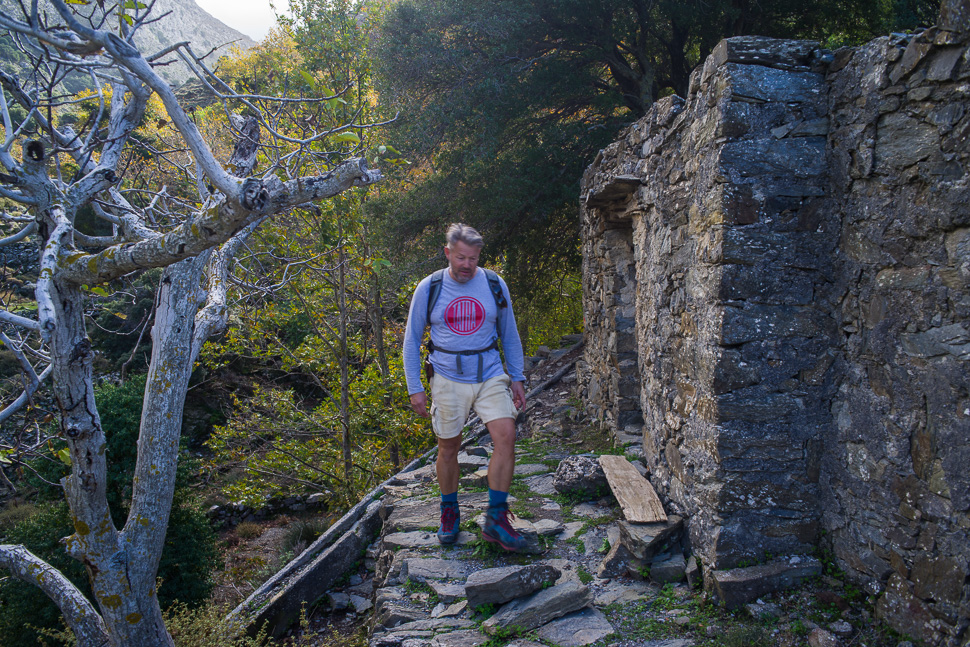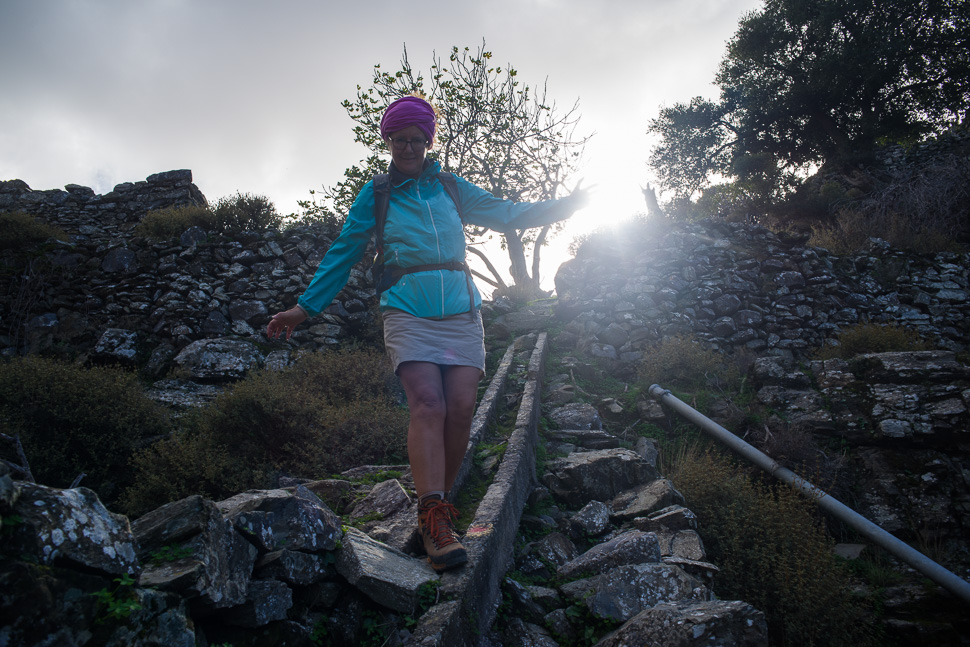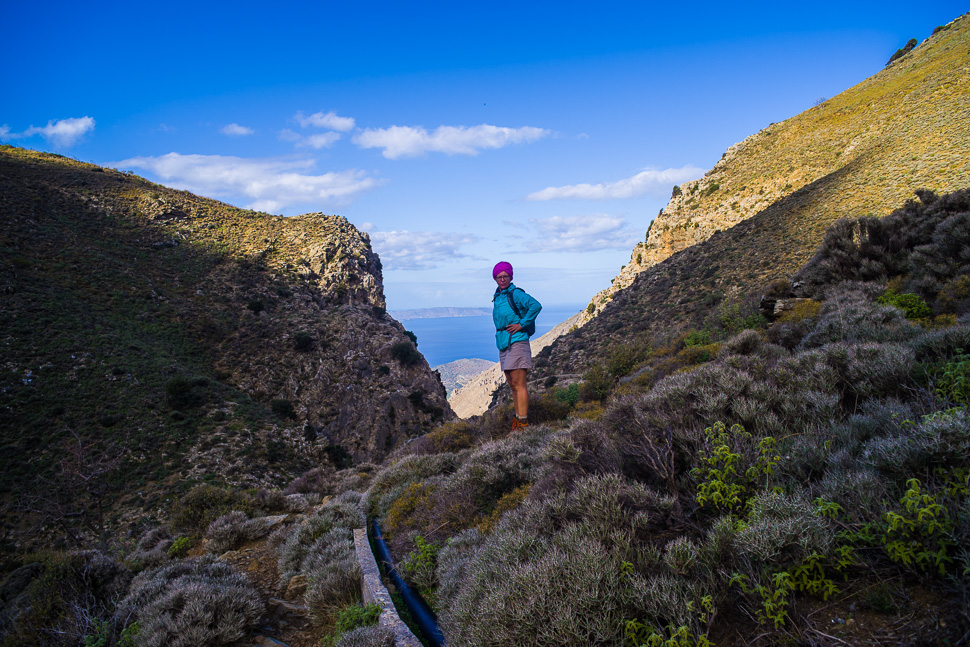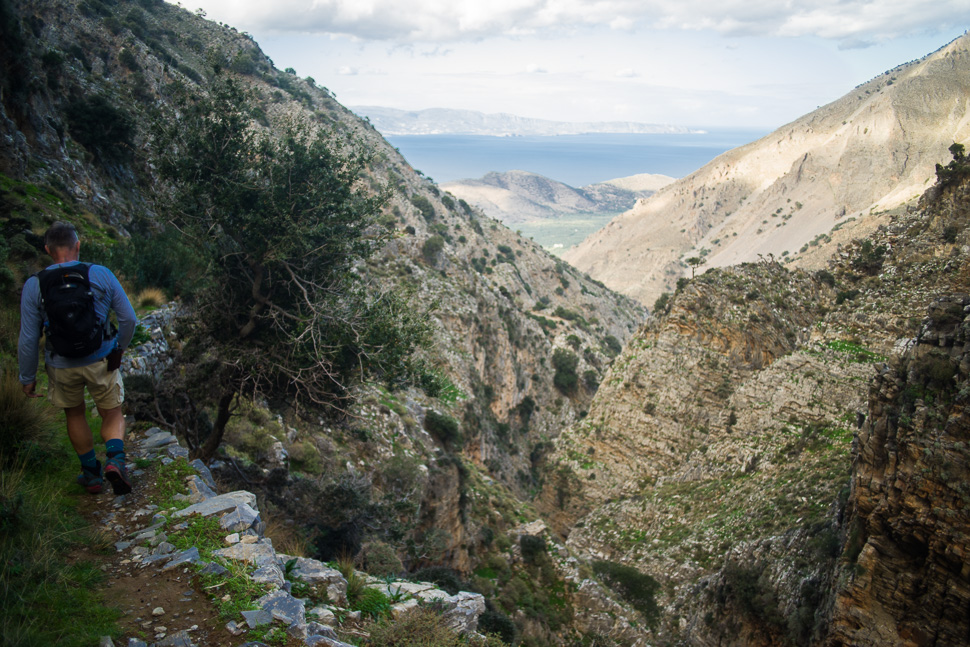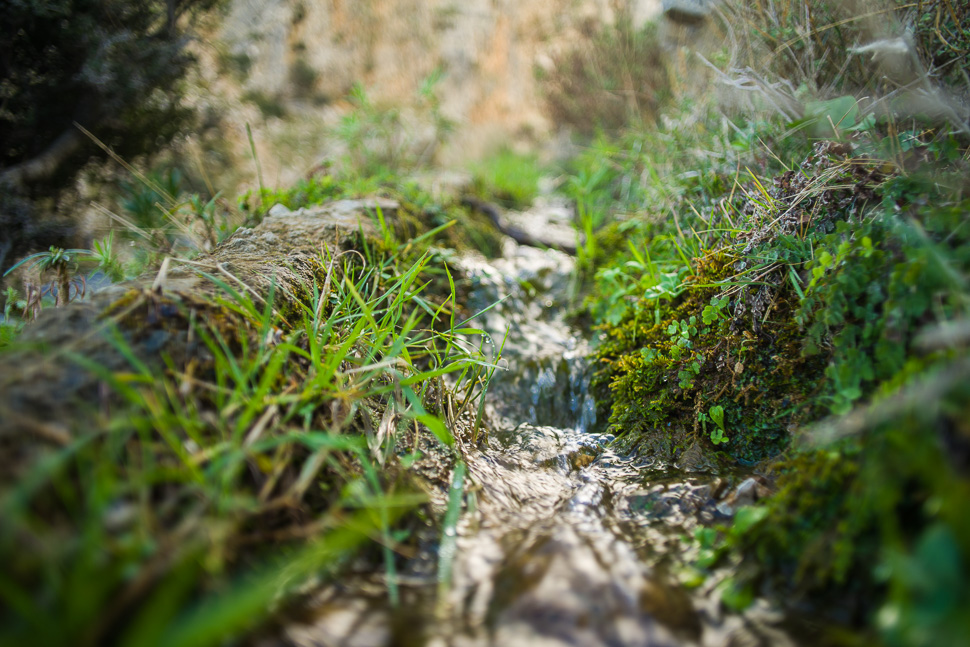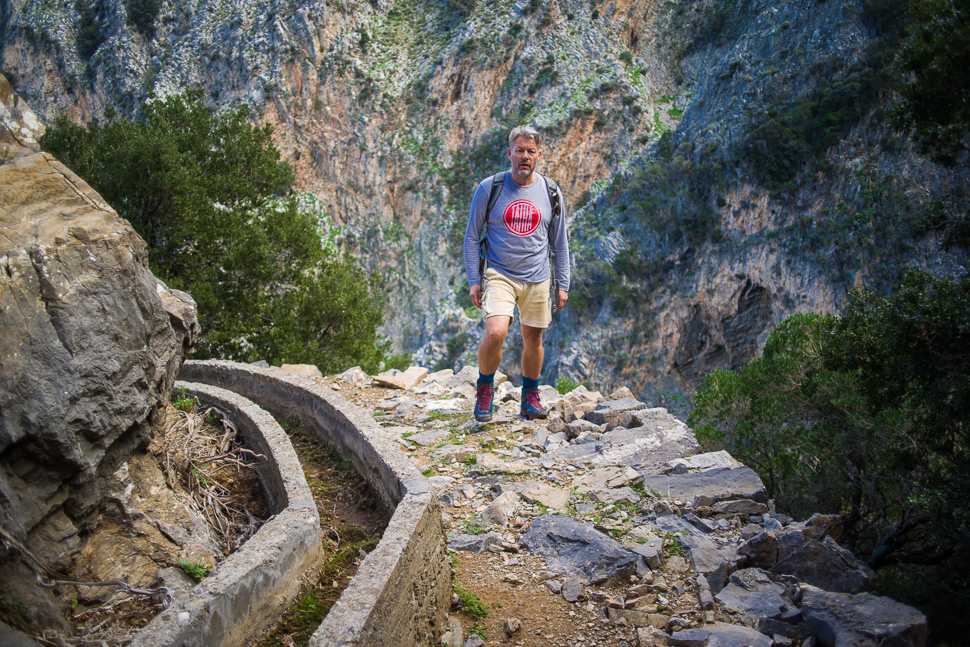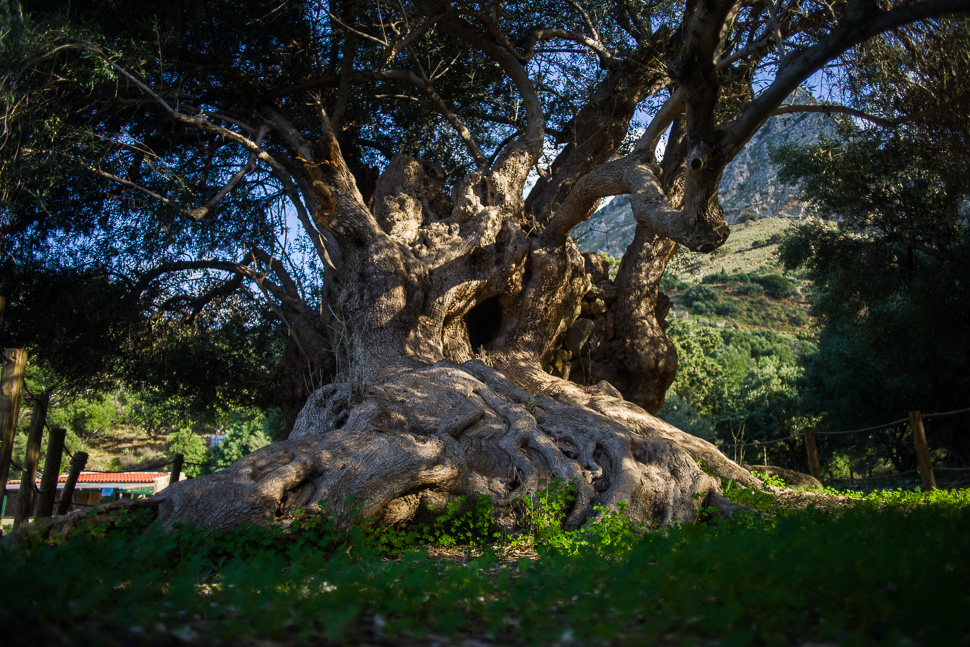A hike starting in Kavoúsi led us high into the mountains and back down along a water channel through a fantastic valley back to one of the oldest olive trees and finally the village again.
We had managed to drop our camper on a small parking along the road, just where the hike starts: 35.123296, 25.860015. We had used the Rother App again, which provided us with the description and GPS track of this hike.
First we walked into a valley and up into the mountains on a kalderimi, an ancient connection path, which was well paved. After a while we reached a dirt road which took us past the tiny village of Mélisses and higher up to a pass from where we had an incredible view back to Kavoúsi and Agios Nikólaos on the other side of the bay of Mirabello.
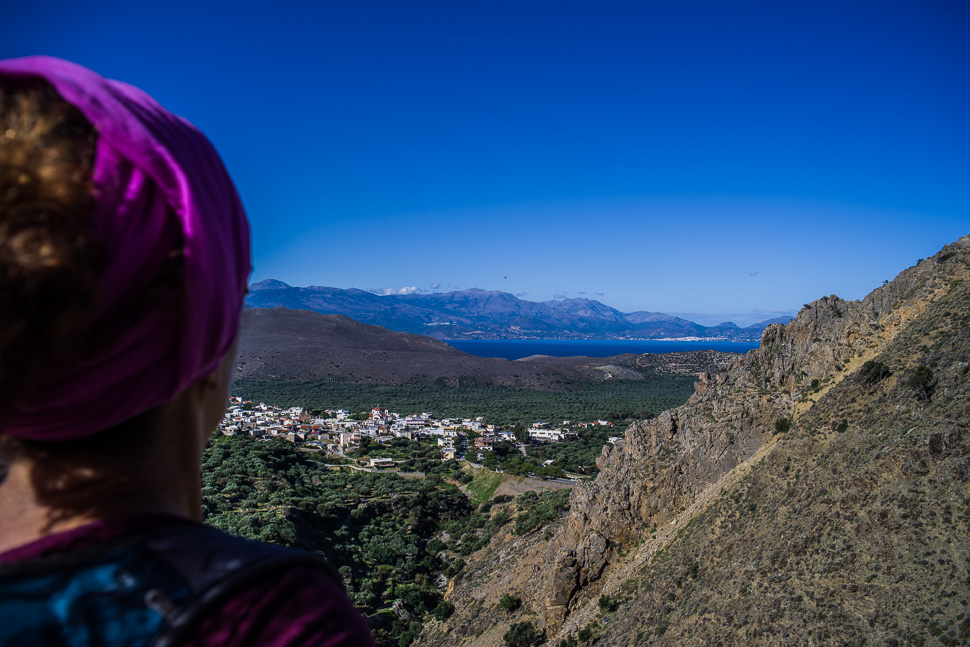 |
| View back to Kavoúsi |
In the next valley we reached the remains of an abandoned settlement from where the hike into the Mesonas gorge along the water channel started.
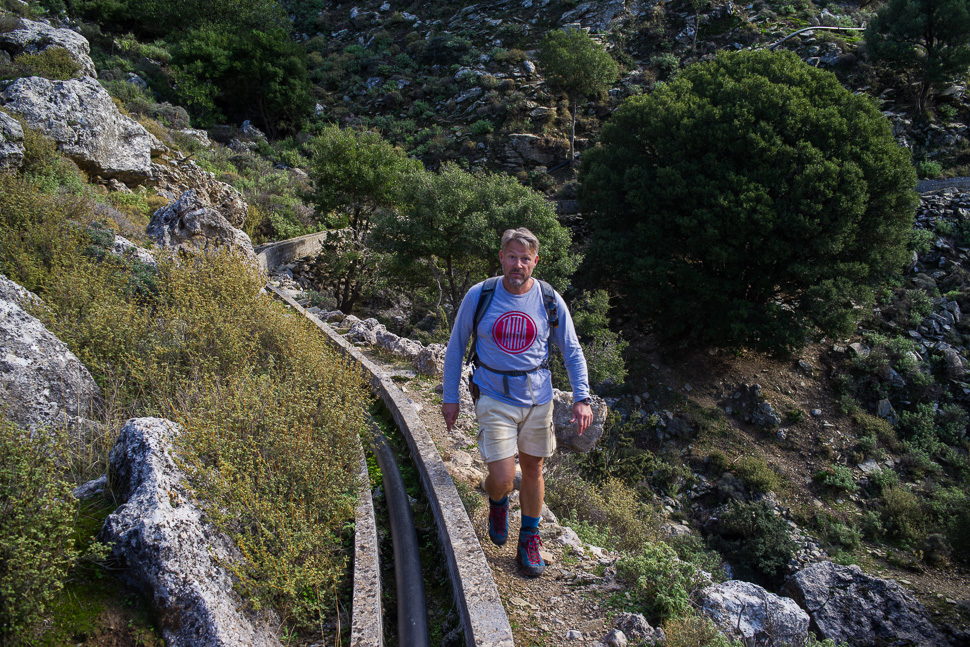 |
| Today, water runs through pipes |
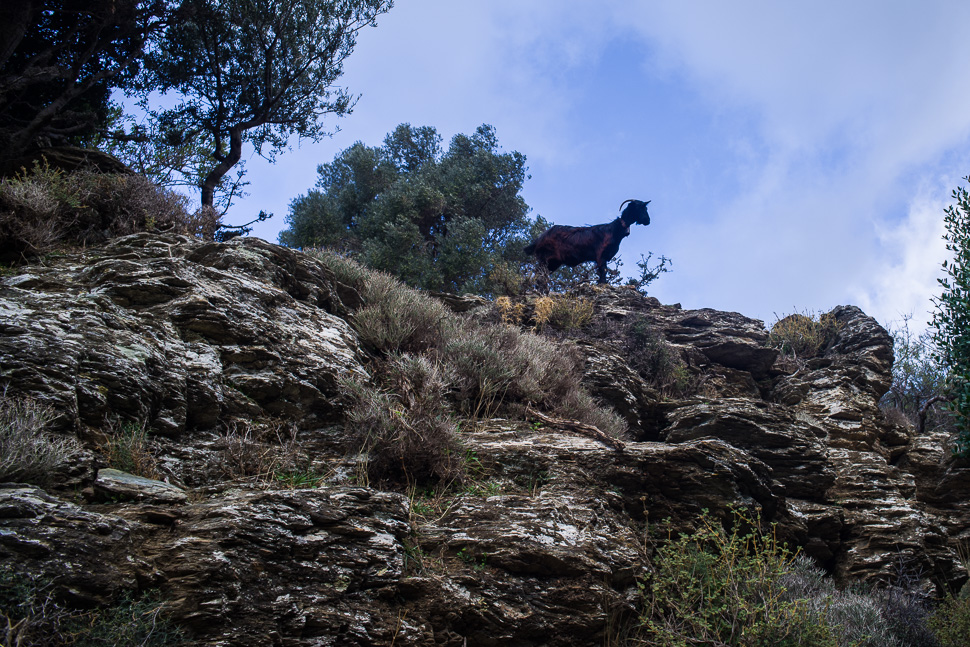 |
| Goat watching us |
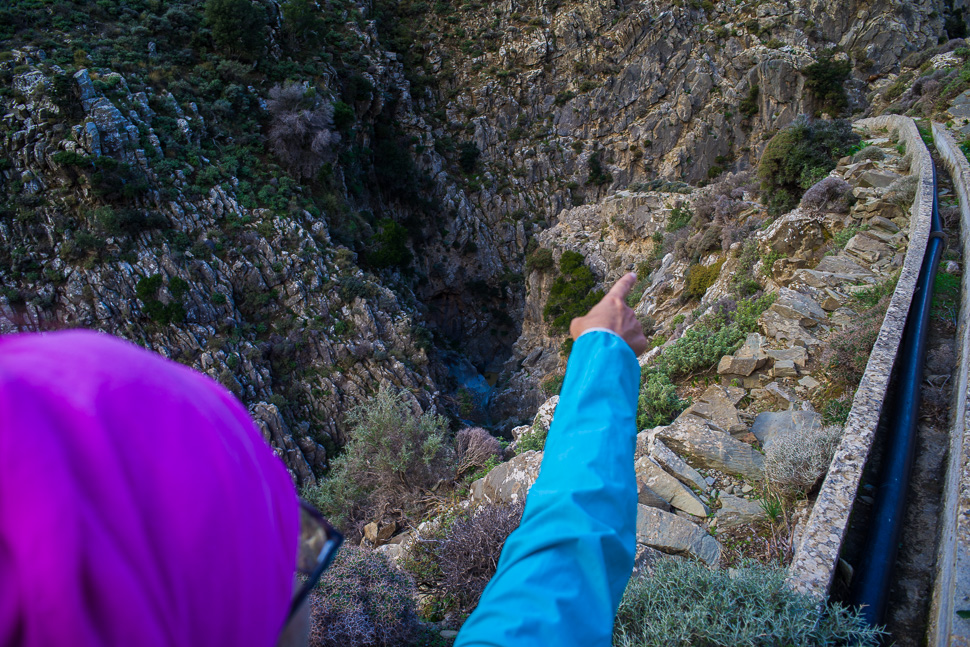 |
| Here the channel dips down into the gorge and continues on the other side |
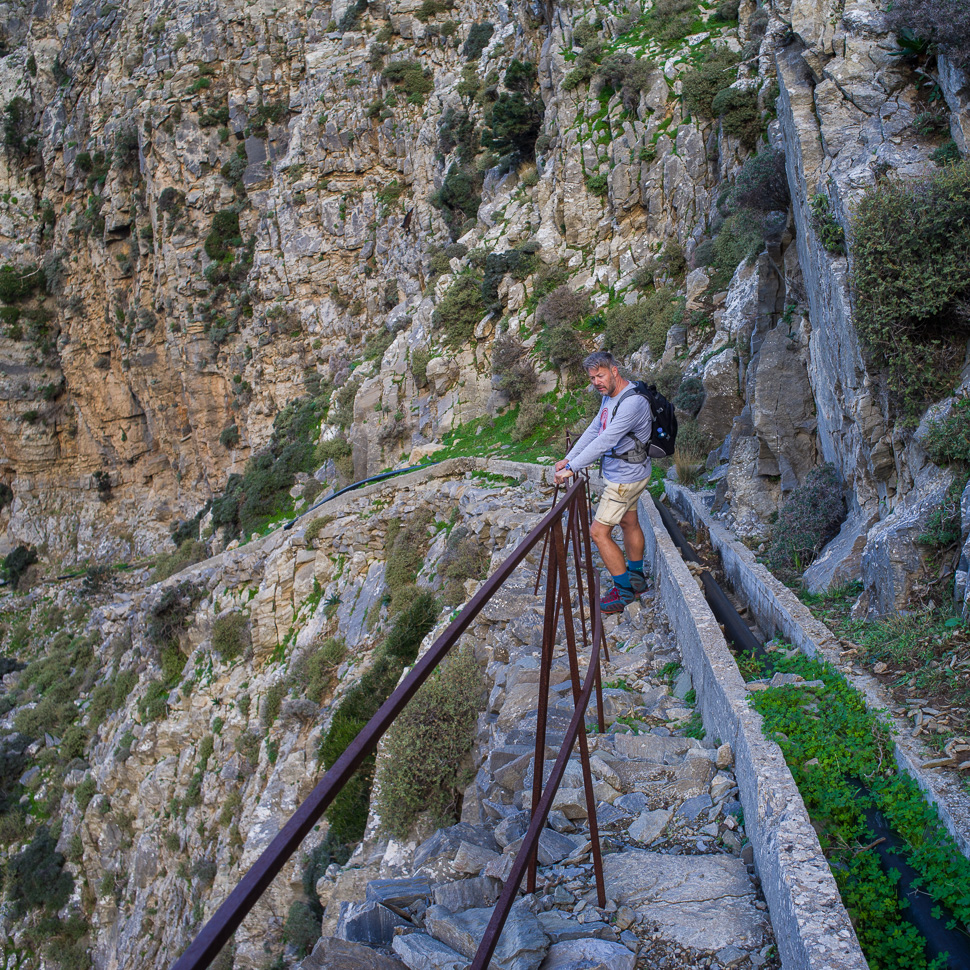 |
| Rusty handrail gives a feeling of security 😉 |
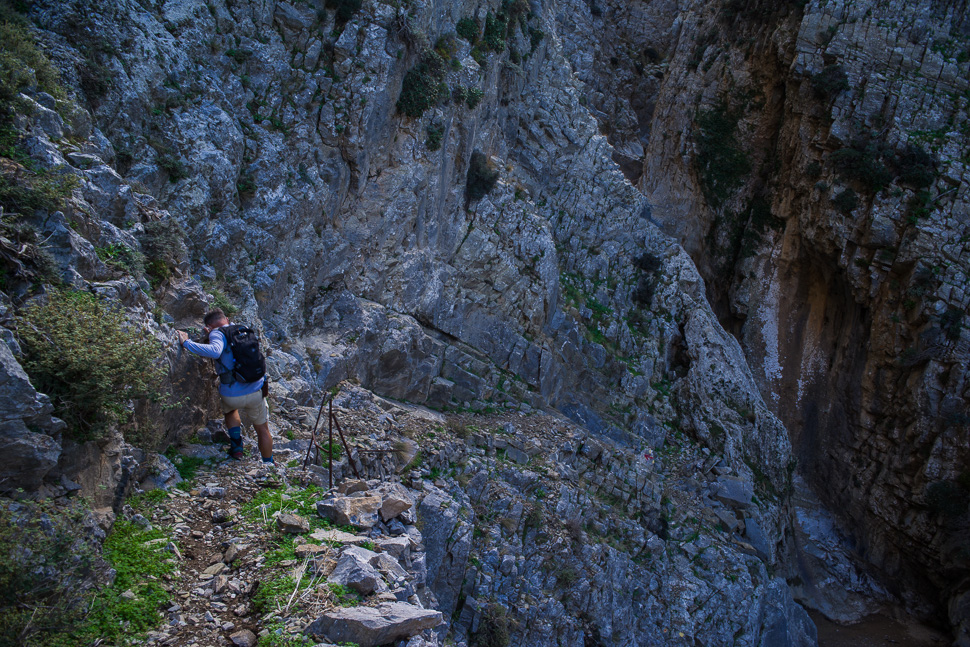 |
| Steep descent into the gorge |
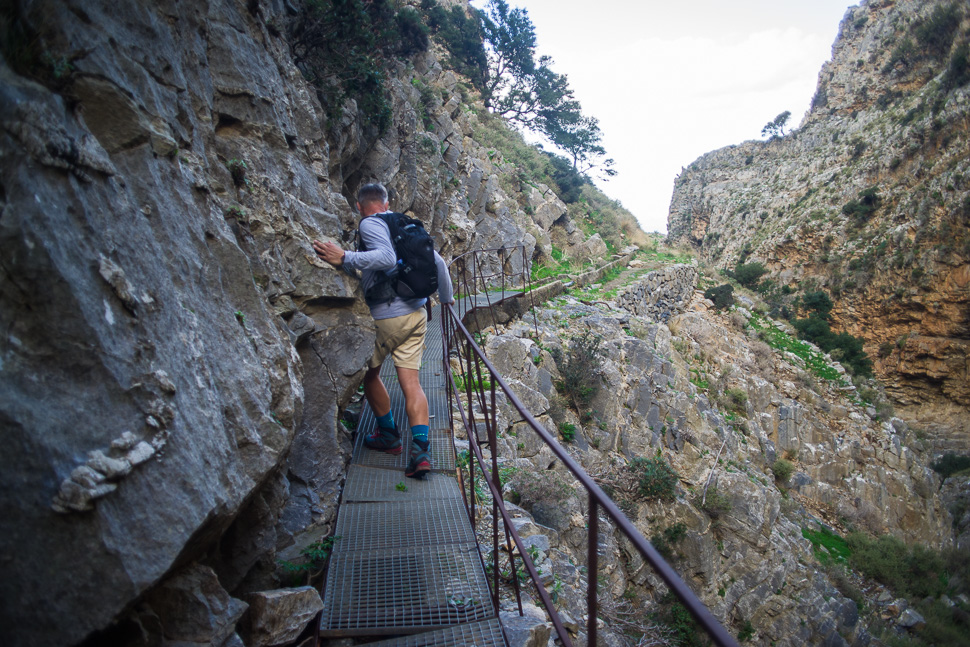 |
| Unstable grid to pass a steep section |
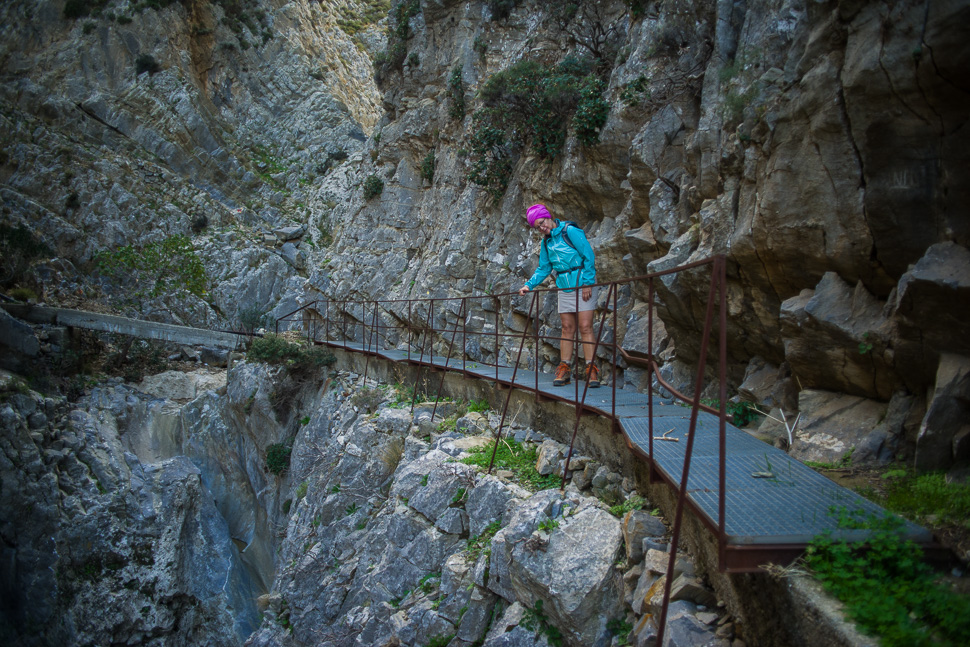 |
| I didn’t really trust this construction |
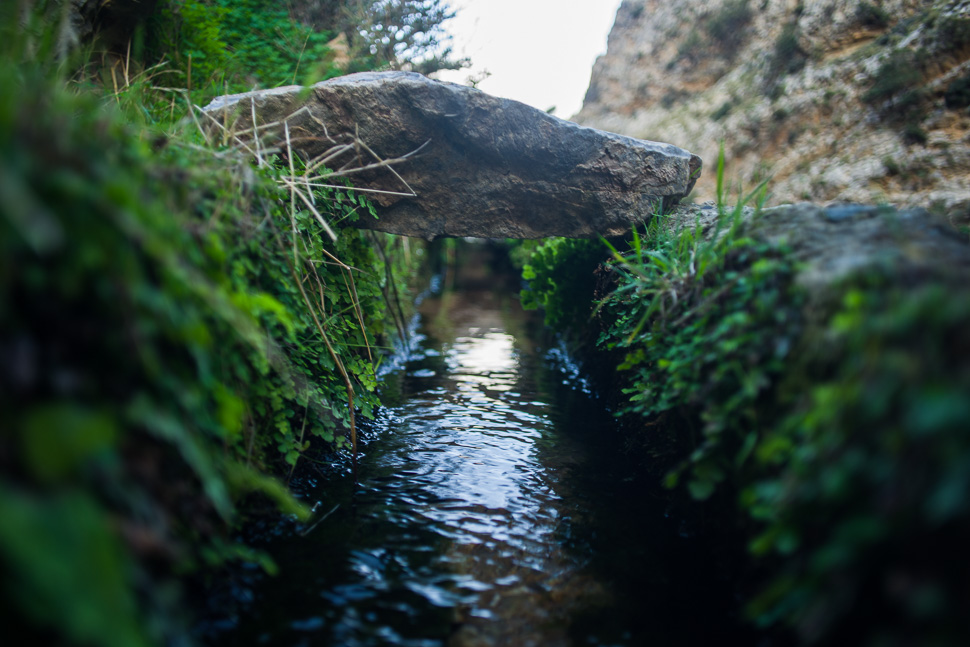 |
| Later, the water was running directly in the channel |
Sadly, the water didn’t get all the way to the village as the channel was broken and the water escaped. For sure this channel served for a long time but nowadays, there must be an easier way of water supply and nobody repairs this channel any more.
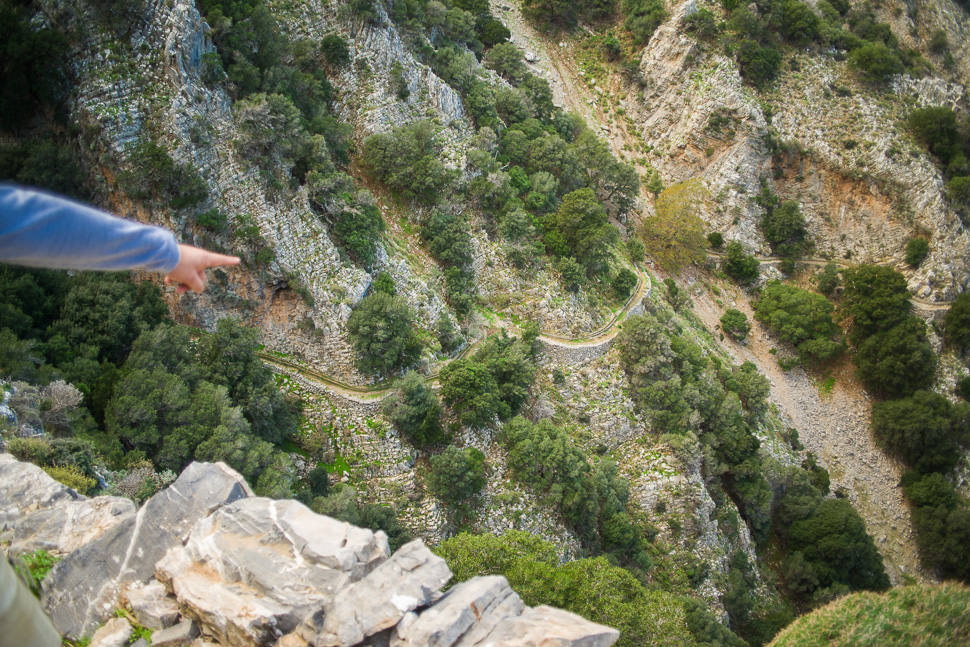 |
| The channel snakes down along the steep side of the valley |
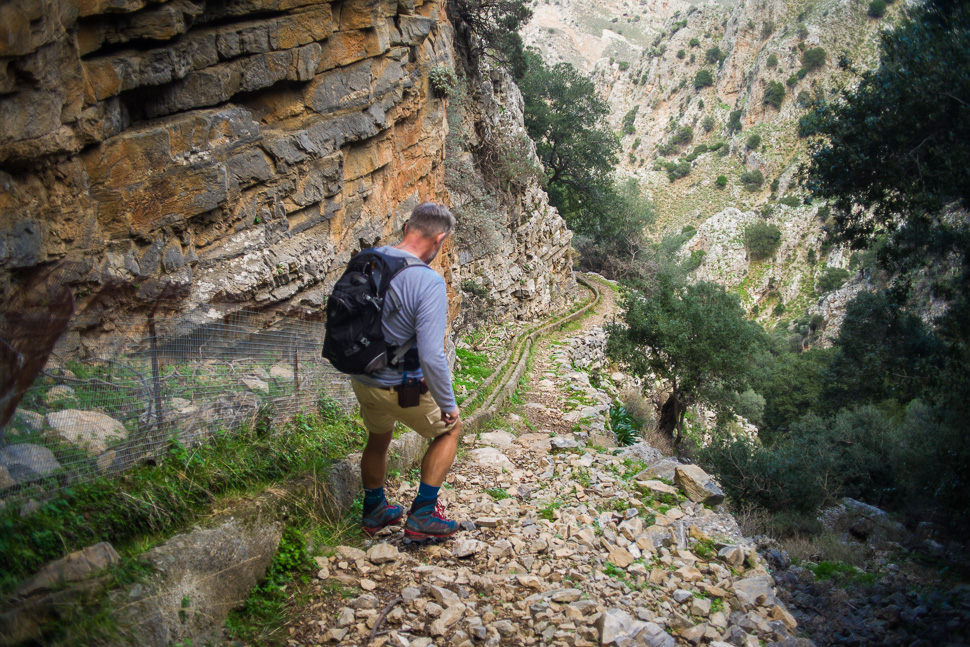 |
| Our path followed the water channel all the way down |
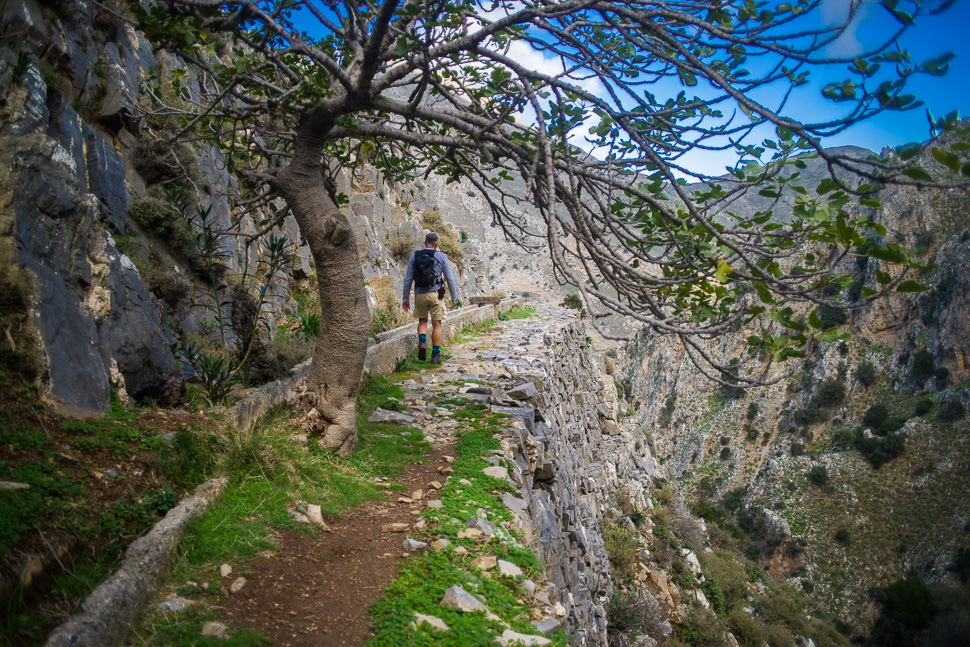 |
| Old fig tree |
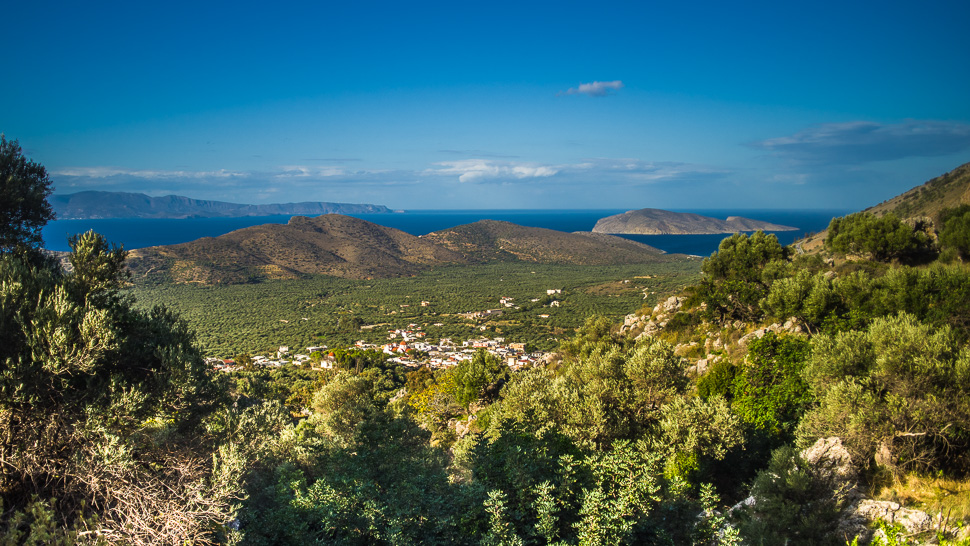 |
| Getting closer to Kavoúsi again |
The hike took us about 5 hours and in hindsight, I would do the route the other way round, going up through the gorge and afterwards strolling down on the easier path.
This olive tree is 3250 years old! One of the oldest olive trees worldwide with a perimeter of 4.90 metres at 80cm above ground and a crown which spans 14.20 metres. It still bears fruits and in 2004 its branches were used for the crown at the Olympic Games.
